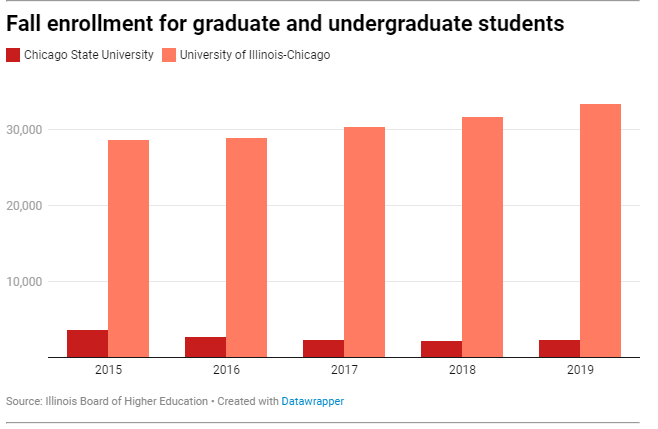Enrollment Decline Leaves Fewer Black College Students To Recruit
An effort is underway, led by the president of Chicago State University, to address and change practices and policies that stymie access and success.
By Judith Crown
With companies accelerating their recruiting of minority students at area colleges and universities, it's a good time to be in school. But Illinois colleges face a challenge countering a long-term decline in Black enrollment.
Enrollment of African American students at Illinois colleges and universities declined by 34% between 2013 and 2019, according to the Illinois Board of Higher Education. That outpaced an enrollment drop for white students of 25.9%. Latino students are faring better, with an enrollment gain of 8% for the same period. The study covers public universities, for-profit and nonprofit private colleges, and community colleges.
Following the publication of earlier data and George Floyd's murder in spring 2020, Chicago State University President Zaldwaynaka "Z" Scott convened a statewide working group of more than 40 leaders to address and change practices and policies that stymie Black student access and success. The group secured funding from the Civic Consulting Alliance and the Lumina Foundation.
The decline of 34% in enrollments is a crisis statistic, Scott says in an interview. While the data predates COVID-19, the pandemic has had a devastating impact on Black and Brown communities, she says.
The Equity Working Group in May released a sweeping action plan that covers access and affordability, preparedness and support, enrollment and program choice, student well-being and connection to career. For example, the report calls for grants that provide small amounts of money that might otherwise prevent students from persisting in college, as well as an increase in need-based funding. The report suggests directives ranging from improving Black student access to dual-career programs to promoting early career exploration.
"Money is not the only challenge," Scott says. "It's food insecurity, health and wellness." Students require support in accessing technology, gaining access to a laptop and the internet, she adds.
The working group is establishing an umbrella organization at Chicago State to house a newly established Illinois Center for Education Equity, which will be charged with implementing the action plan. Chicago State is searching for an inaugural director to be in place by December, a university spokeswoman says. The university also is seeking working group members and other civic leaders to serve on an advisory council, with a first meeting to take place in November.
There was one encouraging sign in the most recent data released by the Illinois Board of Higher Education. For the 2020-21 school year, enrollment by African American students at Illinois public universities was up 0.6%. Most of that was due to an increase in graduate and professional enrollments, up 5.2% to 4,819. Undergraduate enrollment fell 0.8% to 16,010.
But other datapoints are troubling. In a June report, IBHE noted that African American first-year students are placed in developmental education at higher rates than white students.
Public universities retained 85% of white freshmen who entered school in the 2018-19 academic year, but only 66% of African American freshmen, IBHE found. In the same period, nonprofit private universities retained 82% of white freshmen but only 63% of African American freshmen.
The problem starts earlier, IBHE notes. African Americans have less access to Advanced Placement and dual-credit experiences. As a result, they miss out on the opportunity to earn credits or get exposure to college-level work. African Americans made up 15% of the high school graduating class in 2018. Yet, of the seniors enrolled in dual credit, only 9% were African American, while 65% were white. Read the article in Crain's Chicago



 All Rights Reserved
All Rights Reserved